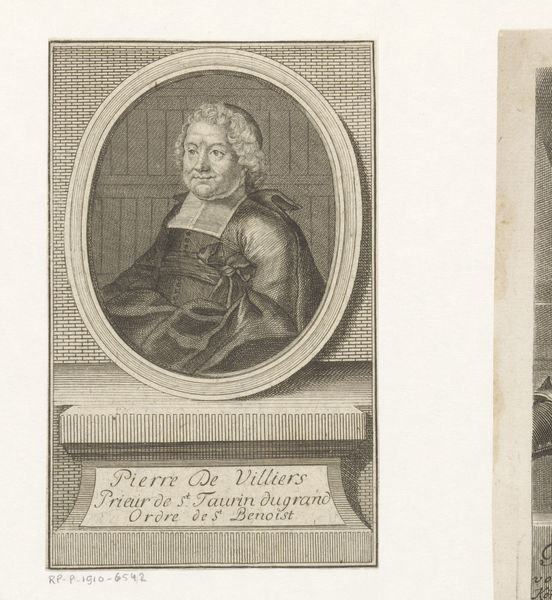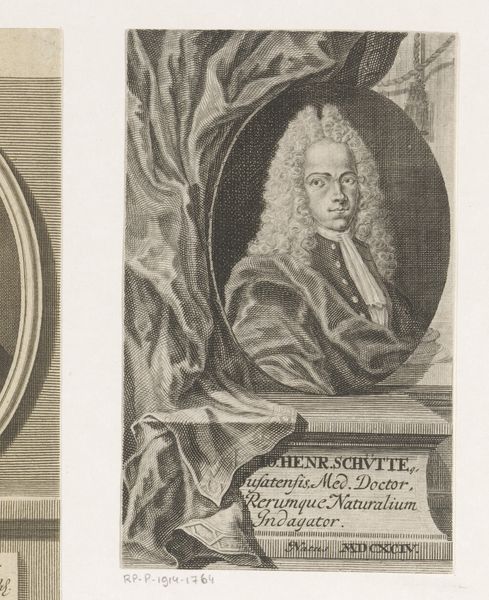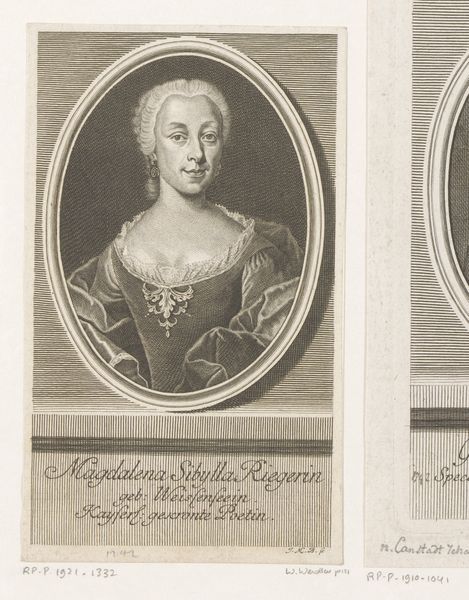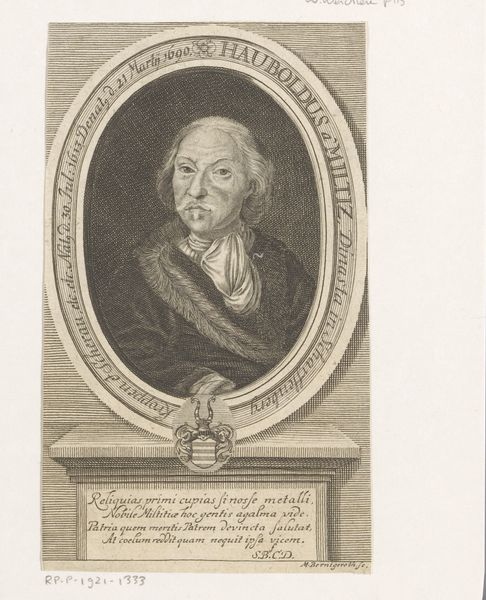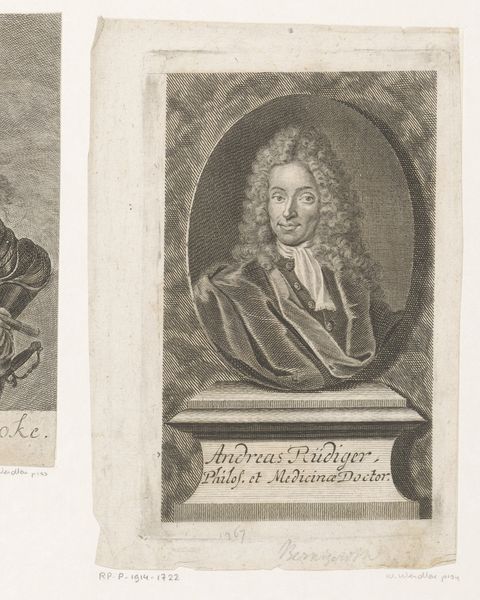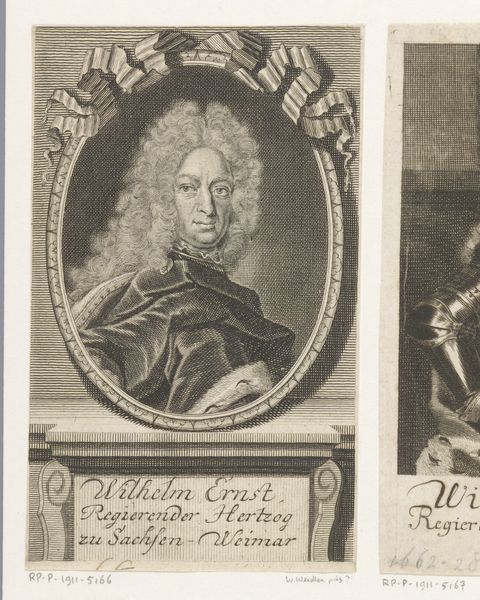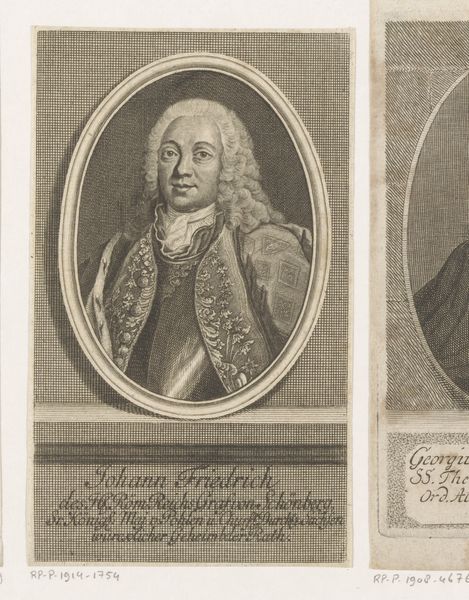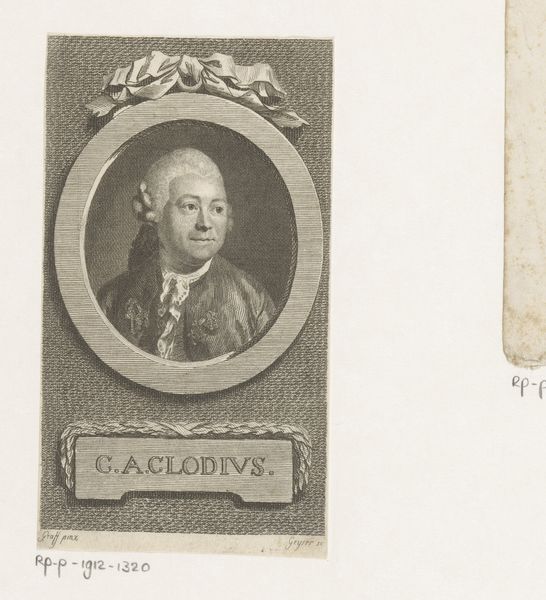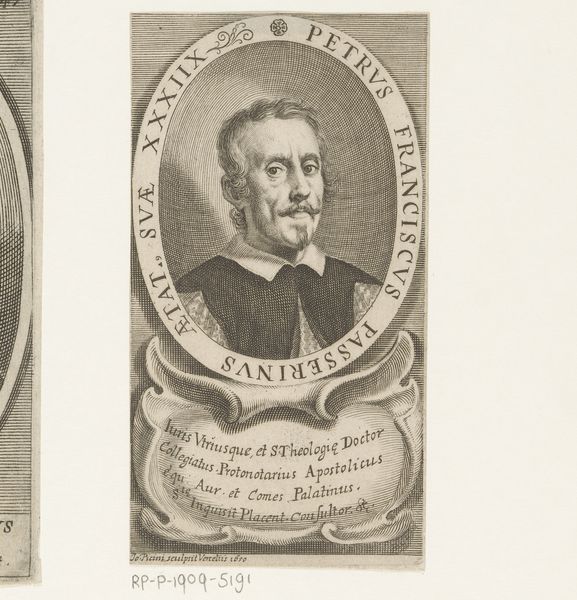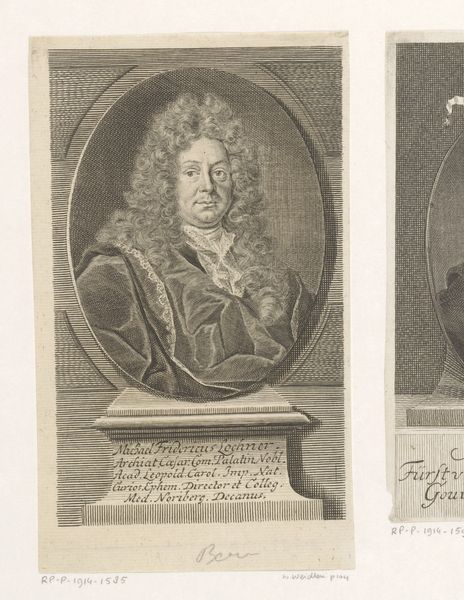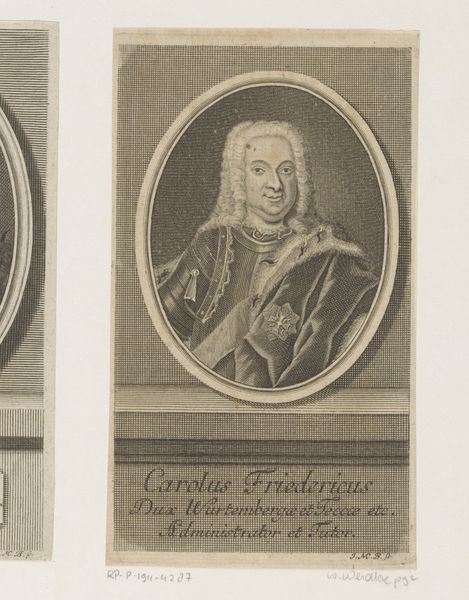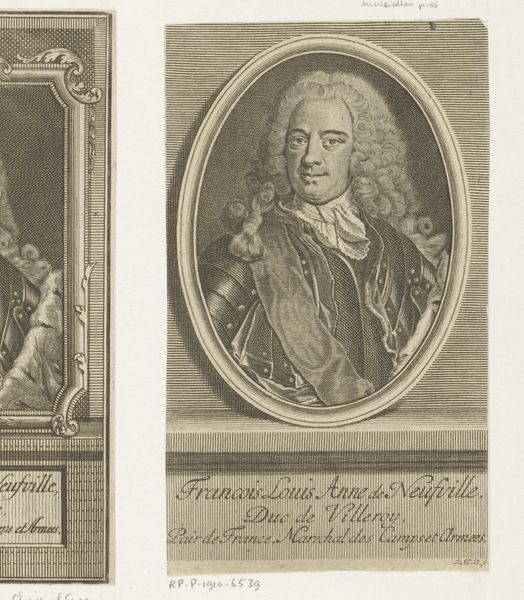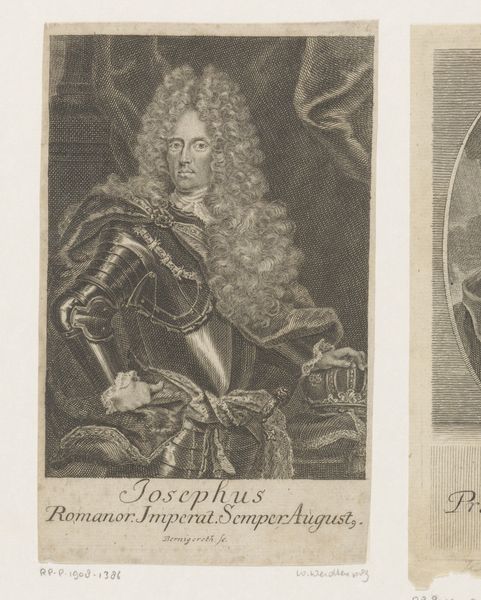
Portret van Rooms-Duits keizer Jozef II als aartshertog van Oostenrijk 1751 - 1764
0:00
0:00
print, engraving
#
portrait
#
baroque
# print
#
old engraving style
#
history-painting
#
academic-art
#
engraving
Dimensions: height 148 mm, width 90 mm
Copyright: Rijks Museum: Open Domain
Editor: Here we have "Portret van Rooms-Duits keizer Jozef II als aartshertog van Oostenrijk," or, "Portrait of Holy Roman Emperor Joseph II as Archduke of Austria" by Johann Martin Bernigeroth, created sometime between 1751 and 1764. It’s an engraving. The level of detail achieved through the engraving process is incredible. What strikes you about it? Curator: I’m immediately drawn to the printmaking process itself. The meticulous labor involved in creating such fine lines on the copper plate. It speaks volumes about the economic system that supports such craftsmanship. Consider the division of labor involved. Editor: What do you mean by division of labor? Curator: Well, we see Bernigeroth credited, but was he solely responsible? Who prepared the copper plate? Who supplied the ink? How was the print distributed and sold? Each stage involved different hands, different levels of skill, and different levels of power within the artistic marketplace. Think about the relationship between the raw materials and the final product. This engraving, ostensibly depicting nobility, is itself a product of extensive labor, connecting the elite to a broader social context. Editor: So you’re saying the artwork itself is evidence of a larger system of production and consumption? Curator: Precisely. It embodies the values and social structures of its time through the materials used, the skills deployed, and its ultimate circulation as a commodity. It moves beyond being simply a portrait; it's a material object deeply embedded in a specific moment in economic history. Editor: That makes me look at the artwork with completely new eyes! I was so focused on the portrait itself, but now I see it as a product of its time. Curator: Seeing art this way reminds us that everything we create has a material history, embedded with social meaning.
Comments
No comments
Be the first to comment and join the conversation on the ultimate creative platform.
